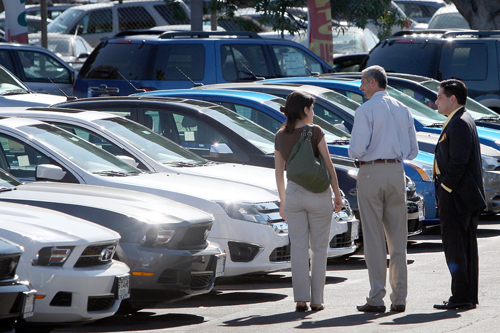The Insurance Institute for Highway Safety (IIHS) has performed a great public service with a new report saying that many teens drive cars that lack important safety features; identifying what features parents should look for if buying a car for teen; and ranking used cars by brand and model for their safety features, or lack of them. The report is similar to IIHS’s well-established “Safety Pick” rankings of new and used cars, but this is the first study to focus exclusively on cars for teen drivers.
I am pleased to report that many of the study’s safety feature recommendations are consistent with Chapter 17 of my book Not So Fast: Parenting Your Teen through the Dangers of Driving. More on this below.
The IIHS study reports that among 500 parents surveyed, 43 percent said their teen drives a vehicle that was purchased around the time that the teen got a license. Not surprisingly, a large share of these cars, 28 percent, are mini or small cars. The study reports that 29 percent of fatalities among 15 to 17 year old drivers were in mini-cars or small cars.
IIHS’s safety feature recommendations are that teens should not drive high horsepower (generally understood as more than 300 HP) engines; they are better protected in bigger, heavier vehicles; and electronic stability control, which is standard on 2012 models and after, is the single most important feature. Side airbags are also noted as critical to safety ratings.
Kudos to IIHS for undertaking this work.
But now for my cautions for parents of teen drivers, drawn from Chapter 17 of Not So Fast. Research performed by Children’s Hospital of Philadelphia shows that teens who have “primary access” to a car drive more miles and have higher crash rates, which is why my first Not So Fast caution to parents is that if they are considering a car for their teen, the first thing to consider is no car at all. Parents who buy a car for a teen soon after he or she gets a license are acting contrary to this safety research. The 43 percent number reported in the IIHS survey is frightening. In addition, my first piece of advice to parents about teen driving is to not put their own convenience ahead of their teen’s safety. If parents are buying a car for their teen because it will make their lives easier, they are violating this important safety principle.
This said, I recognize that there are some situations where, for family reasons, usually economic, teens may need a car, and if the reasons are economic, buying a new car with the best safety features may not be an option. This is where the new IIHS study comes in handy, by pointing out the safety features to look for and ranking used cars by how many of them they have.
In summary, the IIHS study documents the problem of teens driving less-than-safe cars, and recommends which cars parents should consider, but the study should not be interpreted as telling parents that it is safe for them to buy a car for their teen. If a car is a necessity, the IIHS study is invaluable information, but if it isn’t, wait until your teen has substantial experience behind the wheel, or until the car really becomes a necessity.
Here is the link to the IIHS study:

